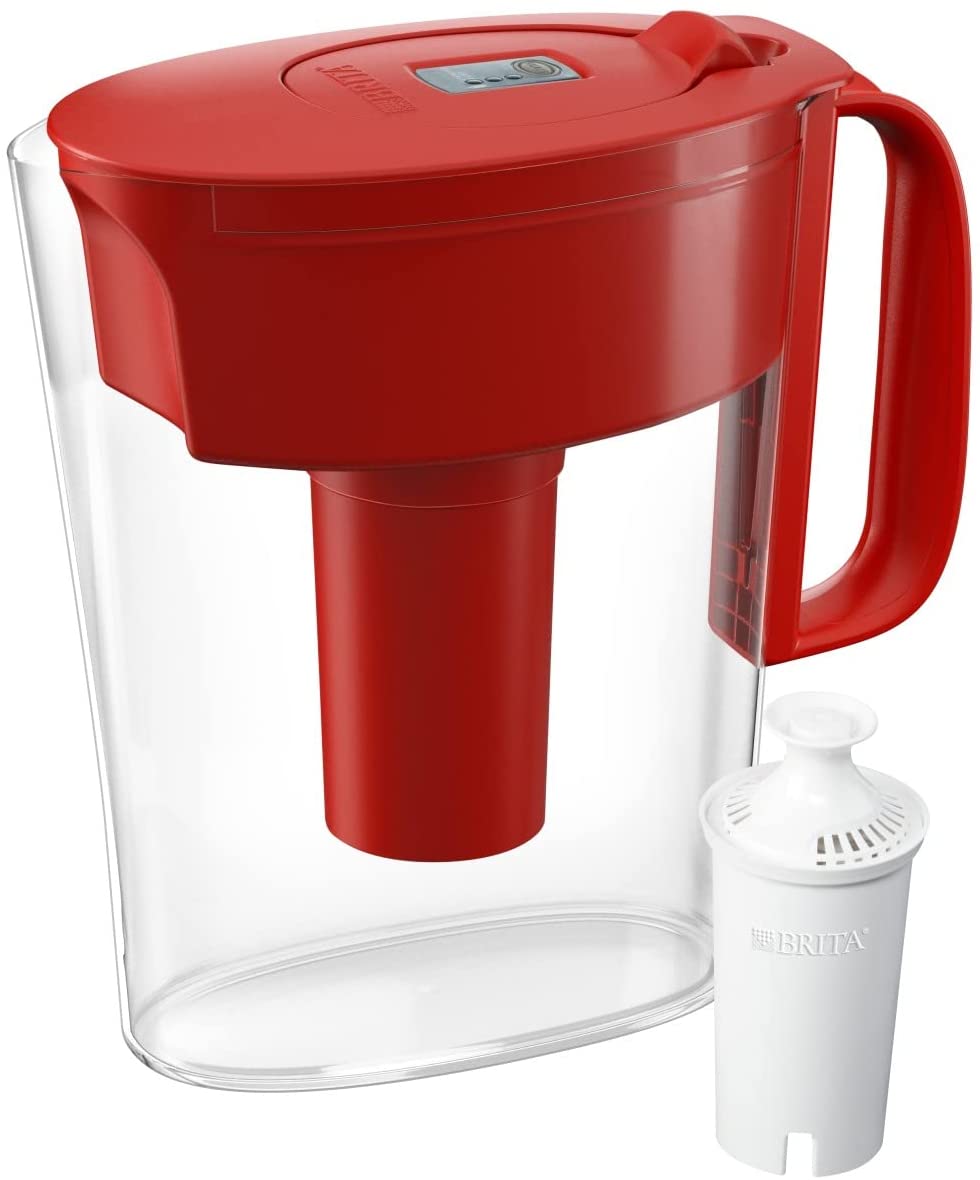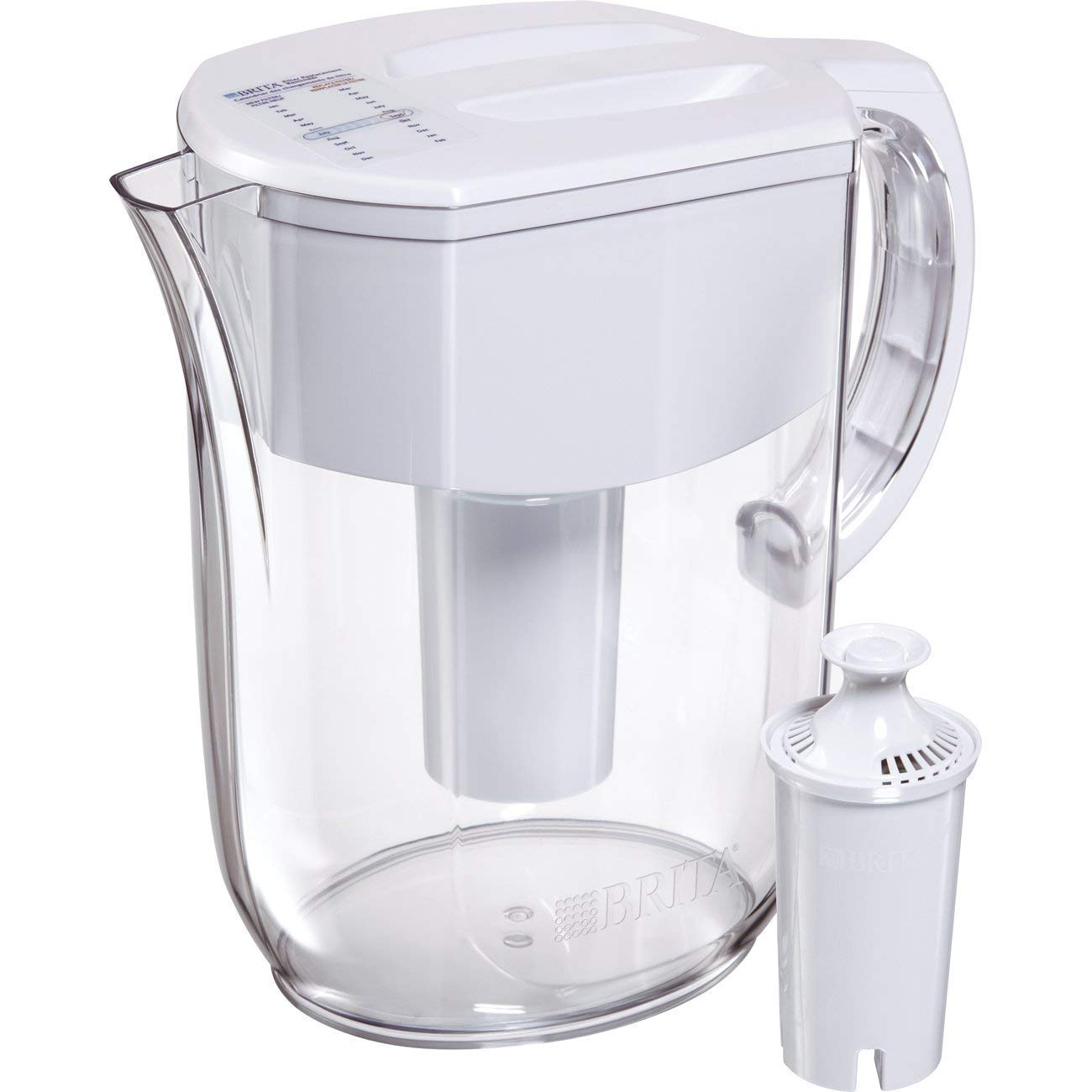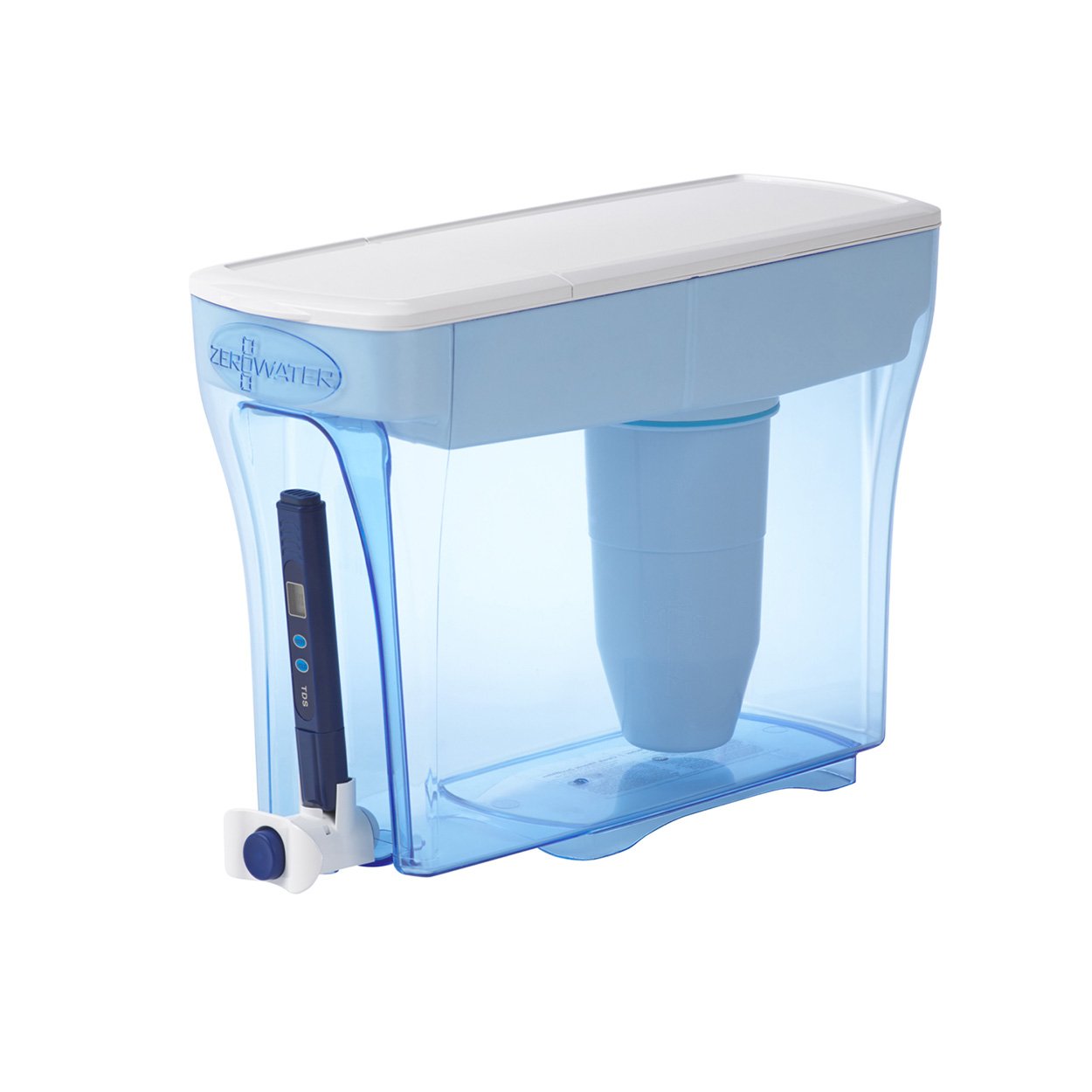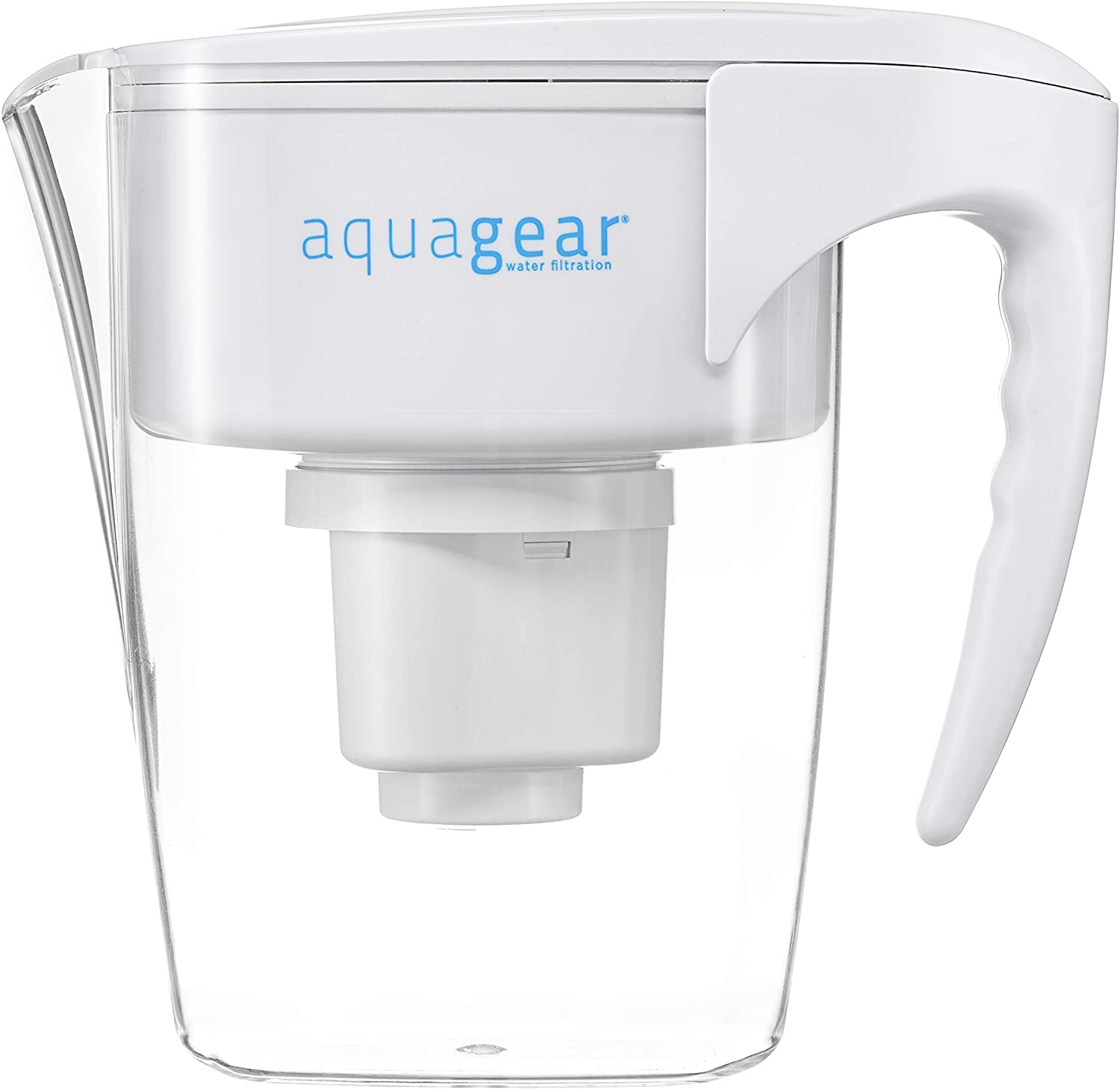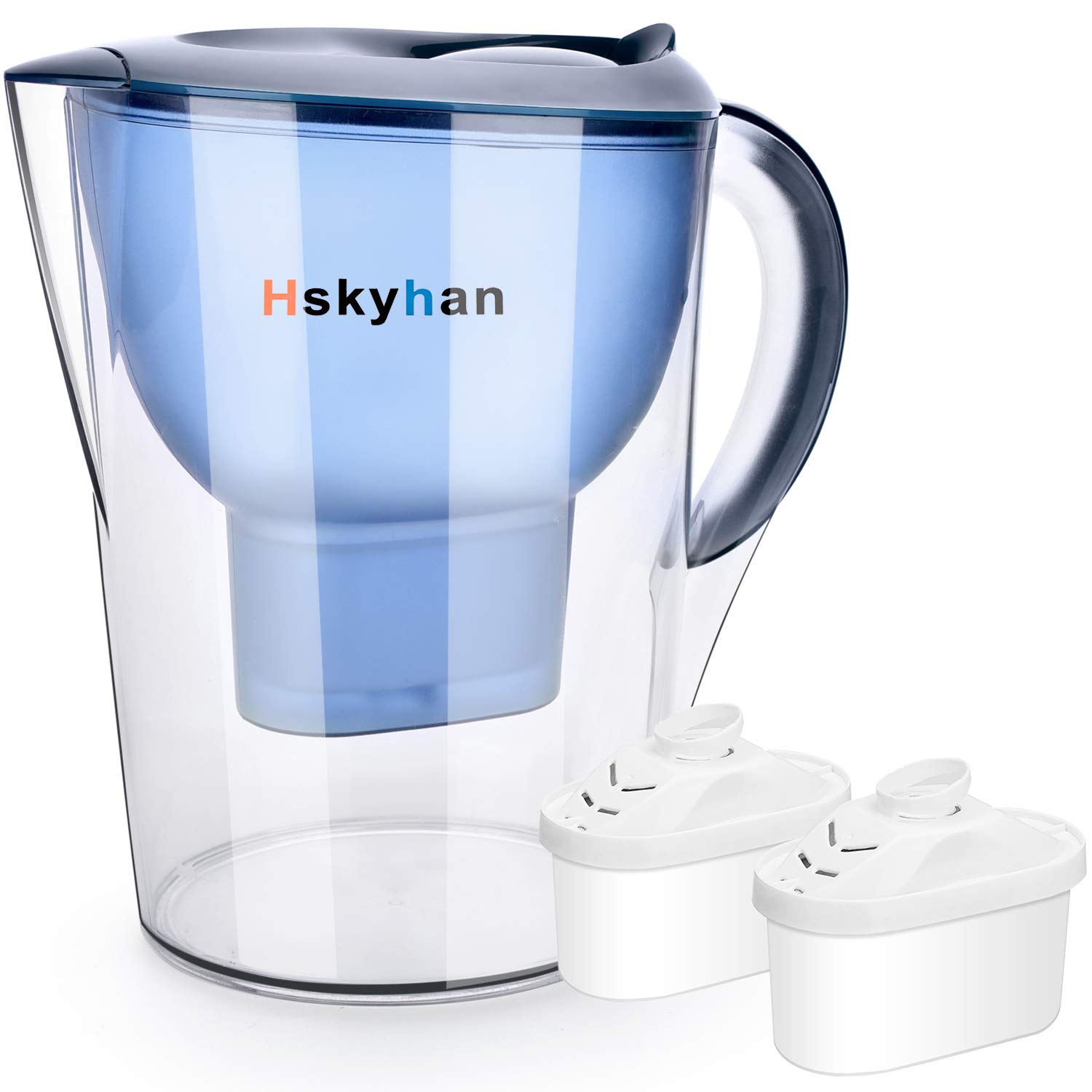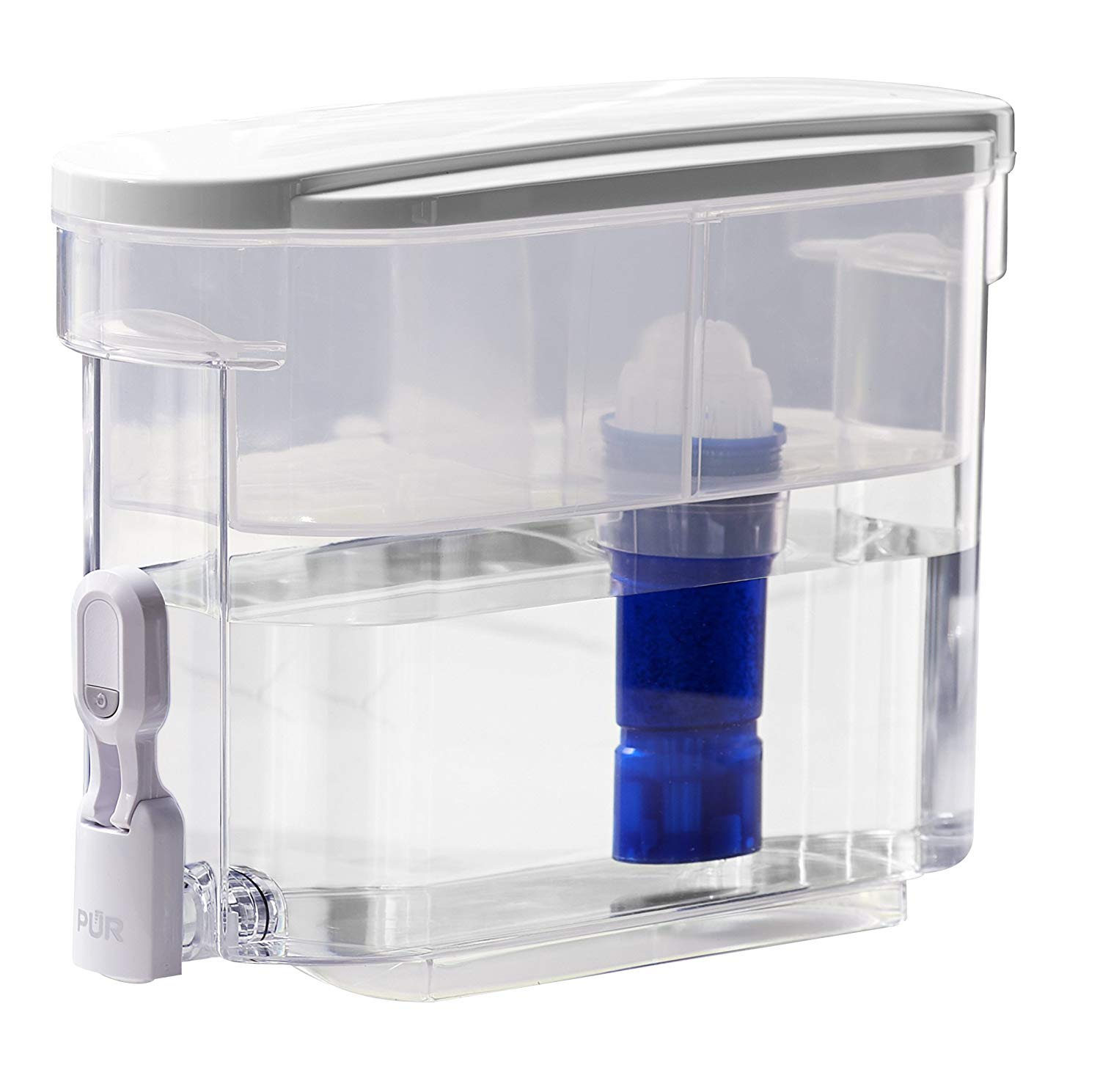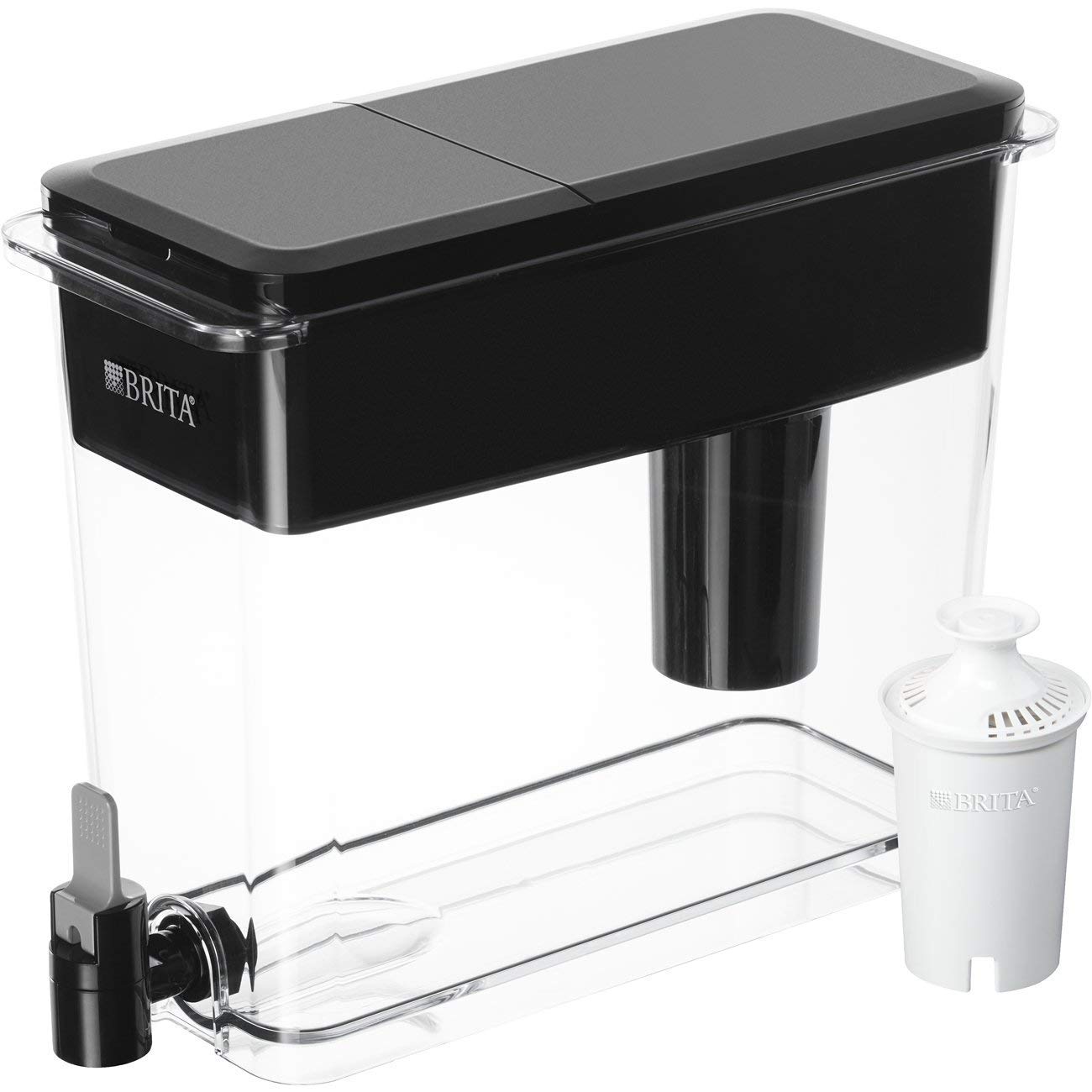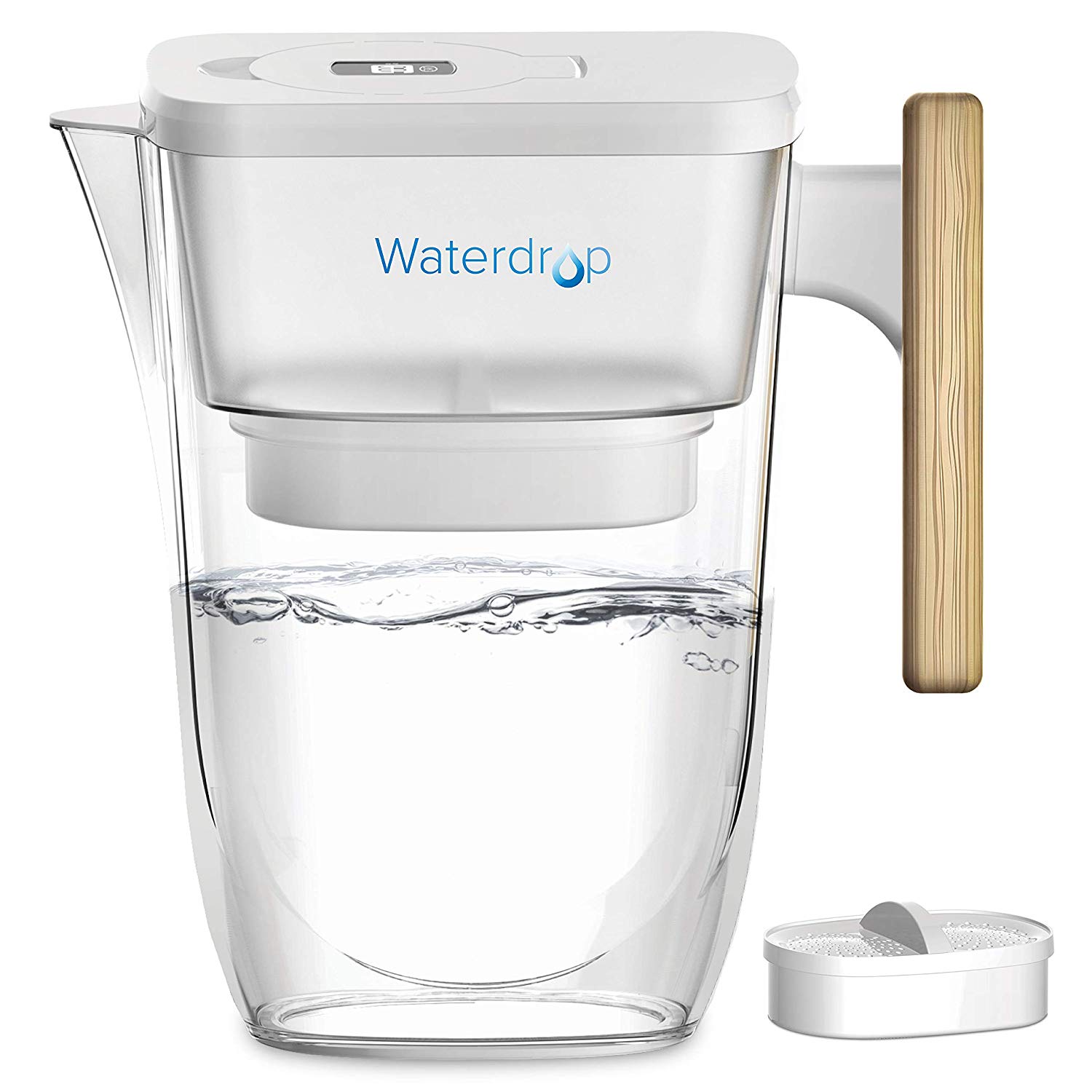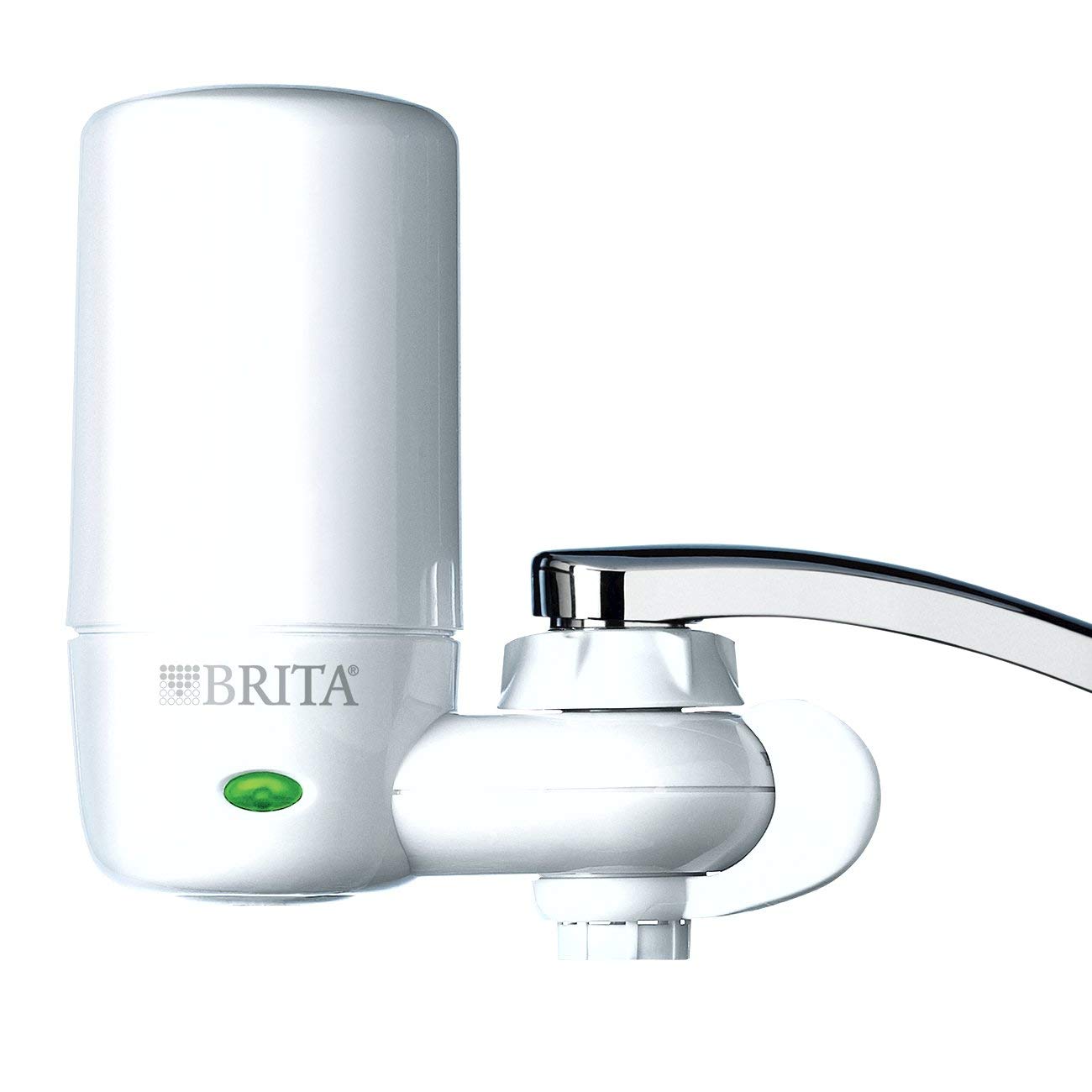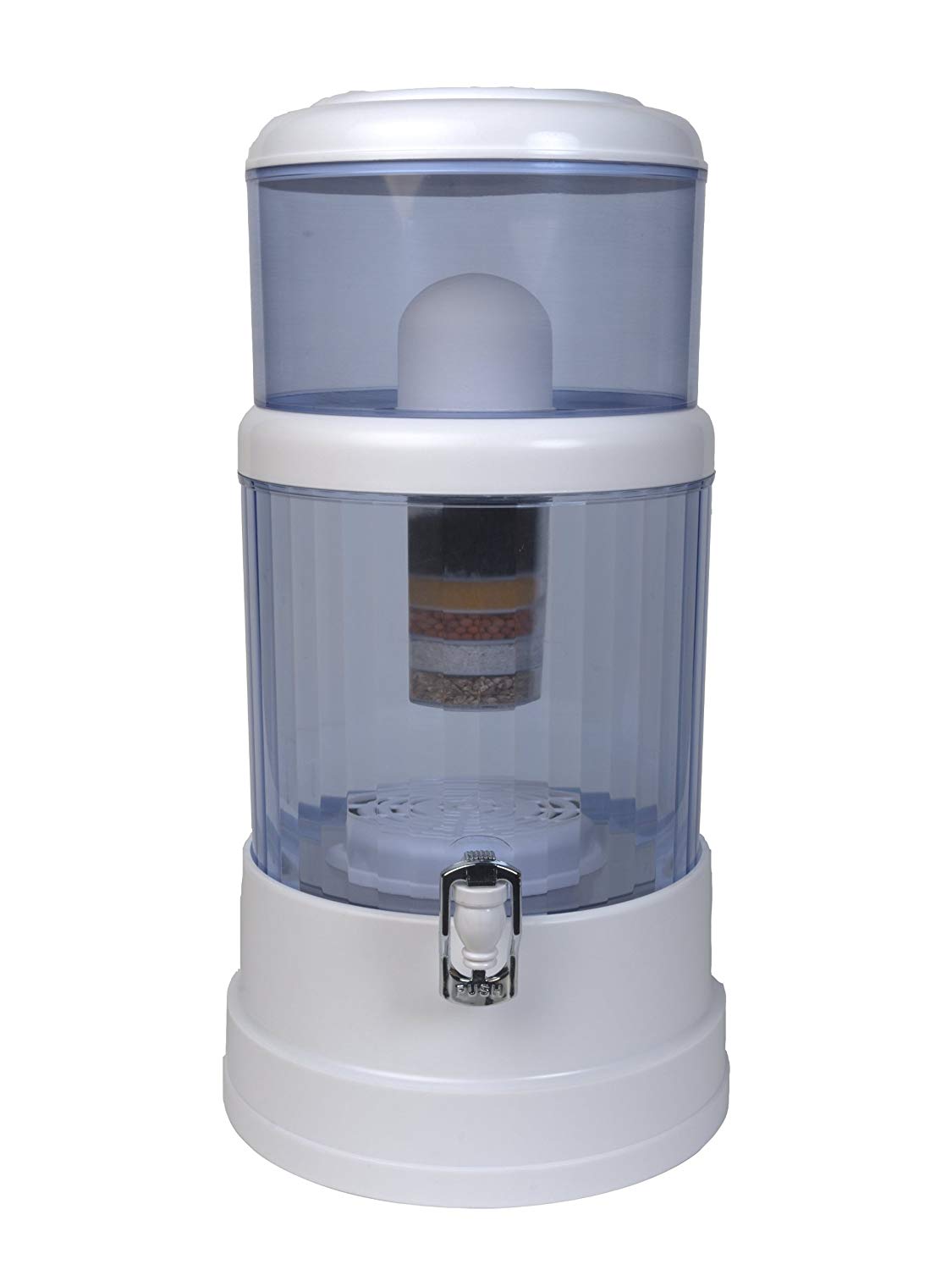Praised for it's sleek design,this pitcher stands out for holding up to daily use and being perfect when a small pitcher is needed.
The BPA free design helps to reduce a wide range of contaminants. Removal of chlorine makes your water taste fresh and pure. The small and compact design is perfect for fitting into narrow places on your countertop and in your refridgerator.
With the maximum loading capacity of 1.39-pounds, this water filter pitcher comes with a space-saving design. The pitcher also has the construction of sturdy BPA-free translucent plastic and perfectly fits into narrow or tight places.
The pitcher is made from a BPA free material and uses standard Brita filters. The filters can help reduce odors and remove heavy metals such as copper, cadmium, mercury and many others.
The pitcher comes with a filter indicator that tells you when it’s time to change the filter. It helps to reduce the taste and odor of chlorine and also helps remove many other common water contaminants.
Pours smoothly without leaking.
With its 5-cup capacity, it’s great for one person and can be easily carried around wherever you go. It weighs only 1.39 pounds and has a small and convenient footprint.
It does not require much space to be stored as it is smaller in size and can be stored in narrow spaces. The indicator on the lid makes the changing the filter accurate so that we don’t have to remember when it needs a replacement.
Thanks to compact and space efficient measurement, the Brita fits easily into narrow tight places.
This Brita water pitcher is ergonomically designed with a flip-top lid that makes refilling a breeze and an electronic filter indicator that lets you know when it is time to change the Brita replacement filter.
It uses BPA free filters that reduce the taste of chlorine, odors and industrial pollutants from your drinking water. Moreover, each filter can be used with 40 gallons of drinking water which eliminates waste and saves money for households.
What I like about this particular model is that it is slim enough to fit in the door of my refrigerator, while still making enough water for a family of two.
Easy to assemble and can fit in the fridge.
Being rather small in size, it is not only space-saving but also suitable for keeping in refrigerator brackets minus the black flecks. Moreover, it is even BPA-free format is real heart winners.
This simple pitcher filter is something that you’ll love. It is very easy to install with no pre-soak and no black flecks. Compatibility with all Brita pitcher makes it even easy for you to reinstall.
This Brita Small water pitcher is best for you to carry anywhere. Ideal for traveling with the capacity of 5 glass water.
What we like about the Brita Metro is that it’s super cheap. It costs about half as much as other models, but also only has half their capacity (too small for an entire family). The sleek design makes it perfect for 1 or 2 people with a crowded refrigerator.
I have the Metro in my fridge, and have no complaints. It’s a great size at an even greater price—plus I love the color!
The Brita filter is capable of reducing chlorine odors and tastes from your municipal tap water. It also reduces other impurities, like cadmium, zinc, mercury, and copper. One of our favorite features of this pitcher is the status indicator that lets you know when it’s time to change the filter.
It is smaller than most, so it is perfect for small households, or even for the office, and will take up minimal space in your fridge or on your counter. Its completely BPA free and uses a filter to improve the taste of your water as well as lower the amounts of Cadmium, Copper, and Mercury in your water supply.
Electronic Indicator - The water filter has an electric indicator on it which notifies the time of replacement of filters to ensure its optimum performance.
Have a filter replacement indicator with digital light.
